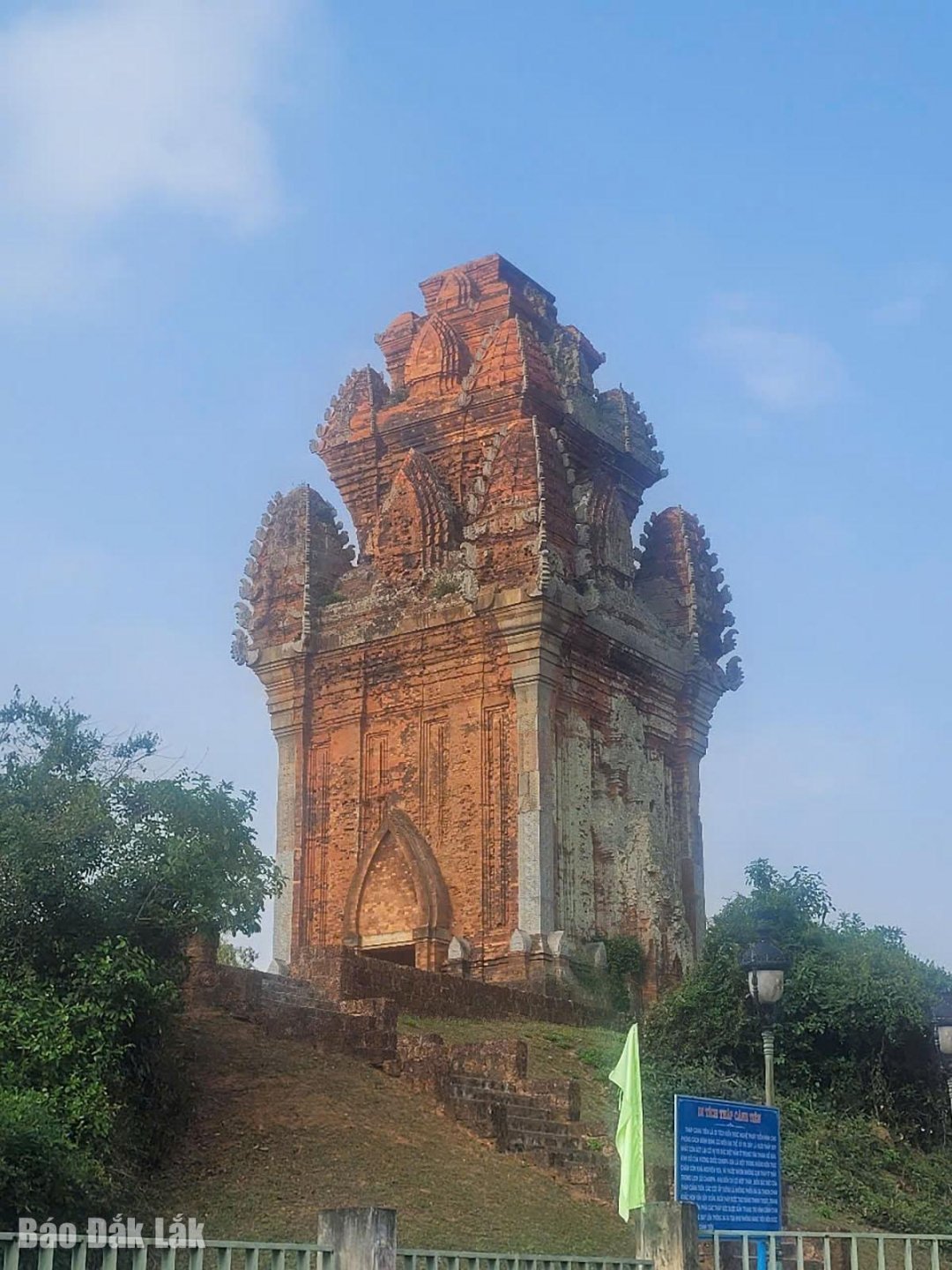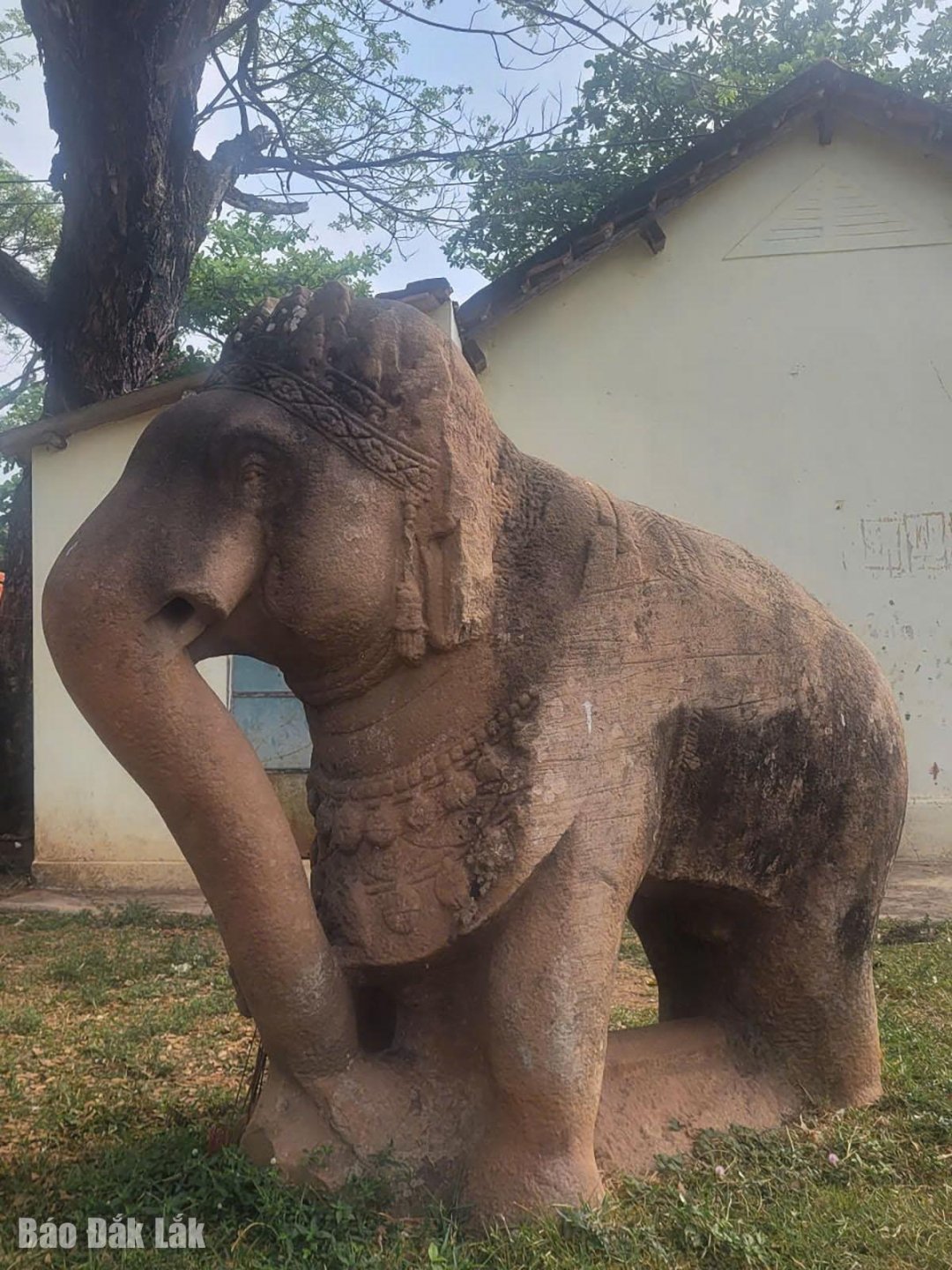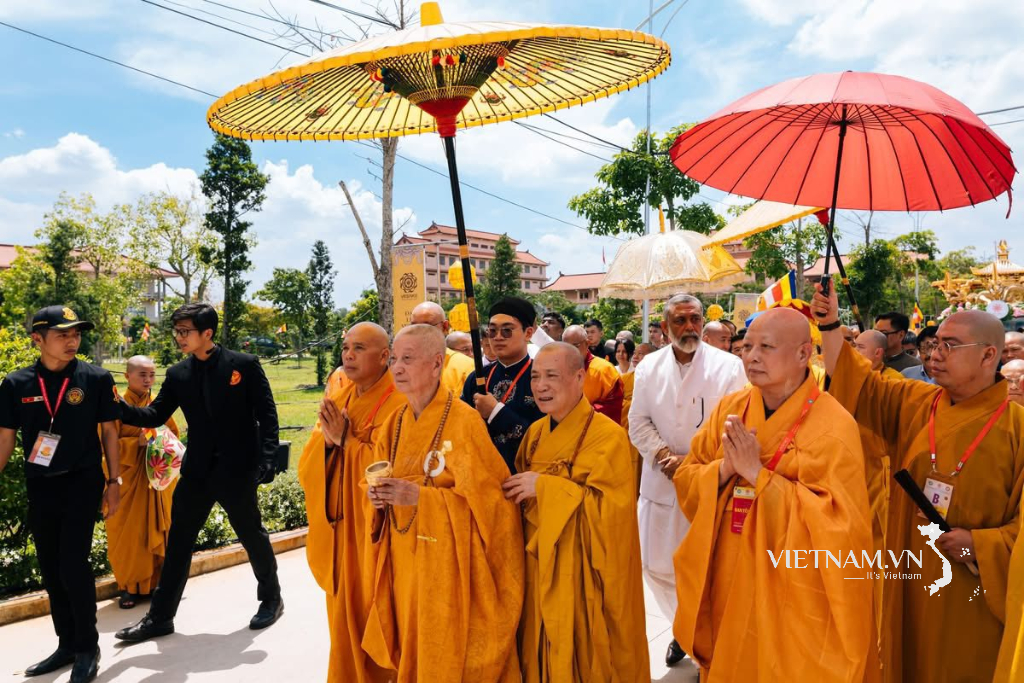According to Quách Tấn's book "The Land and Water of Bình Định," the citadel of Đồ Bàn (Chà Bàn, Phật Thệ...), also known as Vijaya (Victory) according to inscriptions, was built by King Ngô Nhật Hoan of Champa as the capital of his kingdom in the 10th century.
Historical records indicate that the citadel, the residence of the king, was built of stone and had four gates. The king's palace was tall and spacious, with a diamond-shaped tiled roof. The surrounding walls were built of brick, giving it a very imposing appearance. The gates were all made of hardwood, decorated with carvings of wild animals or local creatures. The houses of the people were thatched. From the beginning of the 20th century, the French researcher Henri Parmentier surveyed and mapped the citadel of Đồ Bàn, estimating its size to be 1,400 meters long and 1,100 meters wide.
The poet Quách Tấn, observing the choice of location and construction of the capital city as a strategically important defensive position, remarked: "Looking at the topography of the mountains and rivers, we must acknowledge that the Champa people skillfully chose this place for their capital! And the citadel of Đồ Bàn, with such great foresight, certainly stood firm for centuries!"
 |
| The Fairy Wing Tower in the Do Ban citadel. |
In 1776, the leader of the Tay Son dynasty, Nguyen Nhac, built a new citadel called Hoang De Citadel on the foundation of Do Ban Citadel. The Hoang De Citadel gate is the only remaining relic of that entire citadel.
Now, the crimson palaces and ornate pavilions are gone! Walking slowly around the inner city area, the red earth, the laterite stones, the ancient trees, and the remaining relics and artifacts evoke a tranquil, dreamy atmosphere. South of the current Imperial City Gate stands a pair of large elephants carved from solid stone, their forms and expressions vivid and full of life, dating from the 11th-12th centuries, evidence of the Champa people's relocation of the capital from Cha Citadel to Do Ban Citadel, a prosperous period for this capital city. Other relics left by the Champa people include three stone lion statues inside the Imperial City Gate (two of which stand on either side of the tomb of Vo Thanh - Ngo Tung Chau), dating from the 11th century. Lions are sacred animals with religious significance, symbols of royalty, power, and strength of the Champa dynasties. In 1992, two stone lion statues were discovered near the Fairy Wing Tower and are currently on display at the Binh Dinh General Museum. They were recognized as National Treasures in 2024.
When visiting Do Ban, one cannot miss admiring the Fairy Wings Tower, located on a high hill right in the center of ancient Do Ban (now Nam Tran village, Nhon Hau commune, An Nhon town). From afar, this solemn tower resembles the wings of fairies soaring upwards, dreamy and romantic. Perhaps that is why folklore says the tower was built by King Che Man as a gift to Princess Huyen Tran, a precious jewel. The majestic Fairy Wings Tower, typical of the temple style of Binh Dinh, is essentially a temple (Kalan) dedicated to the god Shiva, a perfect work of architecture and sculpture. The physical structure of the tower represents the true, while the worshipped deities represent goodness and beauty—a perfect blend of architectural and sculptural beauty.
 |
| The stone elephant statue has been recognized as a national treasure. |
Throughout its nearly 500-year history, the citadel of Đồ Bàn has witnessed countless battles, events, and historical occurrences that still resonate today. These include glorious victories in repelling the 100,000-strong naval force of Toa Đô that invaded the kingdom in the late 13th century; and fierce battles with the Khmer army in the south. Historical records show that Champa forces attacked Đại Việt 28 times, including two instances where King Chế Bồng Nga captured Thăng Long; and 20 times when Đại Việt forces advanced to conquer Đồ Bàn. Perhaps history will never forget the death of King Trần Duệ Tông in 1377, as well as the 1471 attack by King Lê Thánh Tông, which ended the Vijaya dynasty. Another event, in 1306, King Tran Nhan Tong married Princess Huyen Tran to King Che Man of Champa in exchange for the two provinces of O and Ly. The story of this noble daughter, who, for the greater good of the nation, set aside her personal feelings and "came here to live with people of a different race" (Quach Tan), has become a fascinating theme in literature, poetry, and music for centuries.
Walking through the ancient citadel, I recalled the ancient Cham stories passed down among the Vietnamese communities who settled around the citadel of Do Ban, and which are still preserved today. These stories, collected by researcher Nguyen Xuan Nhan since 1975, are published in his book "Ancient Stories of Do Ban Citadel - Thi Nai Bay". These stories reveal the unique way the Champa people of Do Ban contemplated the world , human life, and human character, imbued with optimism, love of life, and praise for the values of truth, goodness, and beauty.
In his famous book "The Land and Water of Binh Dinh," the poet Quach Tan respectfully referred to "the imprints of the ancient citadel" as the remaining legacy of a "Champa civilization." Indeed, subtly present in the relics, artifacts, and ancient stories are the noble spiritual values of a once glorious civilization. These values remain vibrant and alive in life today!
Source: https://baodaklak.vn/van-hoa-du-lich-van-hoc-nghe-thuat/202504/do-ban-con-do-dau-xua-0481579/



























![[Photo] Prime Minister Pham Minh Chinh attends the ceremony commemorating the 80th anniversary of the establishment of May 10 Garment Corporation.](/_next/image?url=https%3A%2F%2Fvphoto.vietnam.vn%2Fthumb%2F1200x675%2Fvietnam%2Fresource%2FIMAGE%2F2026%2F01%2F08%2F1767888283715_ndo_br_tttrao-jpg.webp&w=3840&q=75)













































































Comment (0)